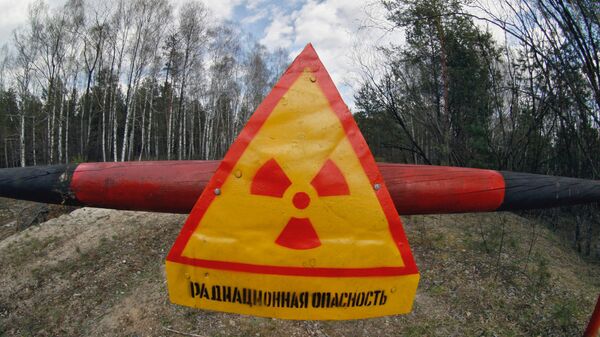A British research team claims to have discovered unexpected radioactive hotspots near the Chernobyl ground zero, three decades after the worst nuclear accident in history.
The hotspots were identified by a suite of drones capable of detecting radioactive gamma particles and neutrons, the University of Bristol announced.
The drones carried out surveys within the Chernobyl exclusion zone, a largely inhabited area within a 30km radius of the failed reactor.
The team flew 50 missions over the area over 10 days, mapping the so-called Red Forest, the ghostly 10-square-kilometre woodland around the plant considered to be one of the most contaminated places on the planet.
READ MORE: Chernobyl Nuclear Disaster Had POSITIVE Effect on Environment, UN Study Claims
The forest was named after the pine trees which turned ginger-brown after dying from radiation.
The Chernobyl Nuclear Power Plant in Ukraine, then part of the Soviet Union, consisted of four working reactors. An accident occurred at unit 4 during a safety test being run just before a routine overnight maintenance shutdown on 25-26 April 1986.
The explosion completely destroyed the unit and led to a massive release of radioactive material into the atmosphere, 10 times more than during the Fukushima accident and 400 times more than during the atomic bombing of Hiroshima.
According to UN estimates, 134 Chernobyl plant workers out of those 600 present during the accident received high doses of radiation and suffered from radiation sickness; 28 of them died in the first three months following the accident and another 19 died in the following years of various causes, not necessarily associated with radiation exposure.
Over 110,000 inhabitants of the polluted areas near Chernobyl were evacuated, coupled with another 220,000 people living in Ukraine as well as in the adjacent areas of neighbouring Belarus and Russia. Two weeks after the disaster, Soviet officials decided to confine the remains of the doomed reactor into a special steel and concrete tomb, often referred to as a sarcophagus, to prevent further radiation leaks.
It soon emerged that it would only last for about 20 years, and in November 2016, a new movable steel structure was deployed to cover the crumbling original sarcophagus.




